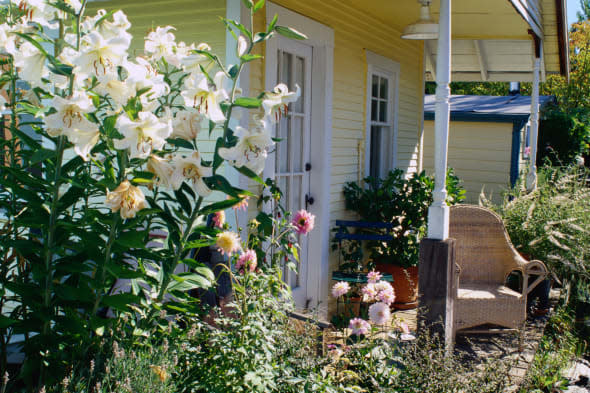Choosing the perfect summerhouse

Summerhouses come in many shapes and sizes, from large log cabins to painted sheds, and what you choose will largely depend on the space you have available. If you're looking to add a peaceful retreat to your garden, here are some ideas to get you started.
Related Searches
Location, location, location
When choosing a location in the garden, opt for a shady spot but away from overhanging trees. Fallen leaves are likely to block gutters and can lead to damp if left to build up. Likewise, avoid areas where water collects during heavy rain.
You'll also need to consider how much space you will need around the structure for access and make sure it isn't too close to a neighbour's property and won't shade your house. A south-facing position is usually best, but watch to see how the sun moves through your garden and think about what time of day you are most likely to use it.
Planning permission is not required for temporary structures, such as summerhouses, but there may be restrictions on older buildings, conservation areas or in some other circumstances. Check your local council website for details.
%VIRTUAL-AFCSponserAds%Materials
Most ready-built summerhouses on the market are made of cladding wood that is pre-treated to withstand the weather. Windows are usually glazed with styrene or plexiglass. If you plan to spend many hours in the summerhouse, opt for casement style windows which open, rather than the purely decorative kind. Curtains or blinds will help provide shade and keep the room cool.
If you plan to use the space for hobbies, you might want to think about having more windows, so you can see to paint, read, sew, etc. If you want a summer house that doubles as a studio or office, then the building will need to be well insulated, as well as having heating and lighting. You'll also need to think about access to electricity and a phone line.
When it comes to preparing a base for the summerhouse, the best solution is solid concrete, particularly for larger structures. Paving slabs can be used for smaller structures or in areas with limited access. In either case, the base should be flat and level and be a few inches larger than the structure's floor size.
DIY summerhouses
If you're handy with a hammer and nails, buying your summerhouse in kit form can be an economical option. You'll need basic tools, a stepladder and ideally, help from a partner. Be aware that if you decide to have electricity in your summerhouse, you will need to consult a qualified electrician to ensure that wiring is completed according to codes and standards.
Convert your shed
The most economical option is to convert your existing shed. If there is ample headroom to stand up and move around comfortably, you could remove one wall and add seating. Alternatively, replace the door with the door with a glazed panel doors and add windows. A lick of paint inside and out, new flooring and a few cushions and pictures will complete the transformation.
Have you recently added a summerhouse to your garden? Share your tips below...




